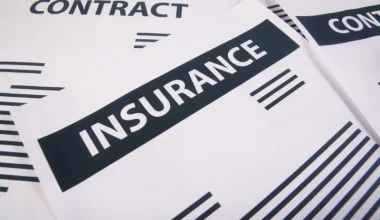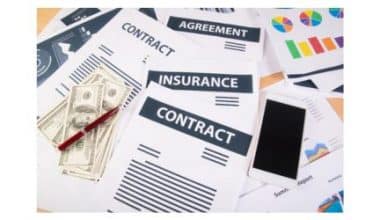Welcome to the realm of business hazard insurance, where we delve into crucial aspects such as what is included in small business hazard insurance, understanding business hazard insurance for SBA (Small Business Administration), and the essential requirements for securing comprehensive business hazard insurance coverage. In this article, we navigate the intricacies of safeguarding businesses against potential risks and optimizing protection to meet specific SBA-related needs.
What Is Business Hazard Insurance?
Business hazard insurance is a type of insurance coverage designed to protect businesses from various risks or hazards that may result in financial losses. This coverage is crucial for businesses of all sizes, from small enterprises to larger corporations, as it helps mitigate the impact of unforeseen events. Hazards covered by this insurance may include natural disasters, accidents, property damage, liability claims, and other risks that could disrupt or harm business operations.
The specifics of coverage can vary, and businesses often tailor their policies to address the unique hazards they face. Business hazard Insurance plays a pivotal role in providing financial security and ensuring business continuity in the face of unexpected challenges.
Small Business Hazard Insurance
Business hazard insurance, alternatively referred to as business property insurance or business contents coverage, serves as a protective shield against damage and theft of a business’s property. This insurance is a crucial component for businesses, particularly as it provides financial security in the face of unexpected events. Additionally, it’s commonly mandated by landlords and lenders to safeguard their interests and ensure the resilience of the business in the event of property-related risks.
Business Hazard Insurance for Sba
When utilizing property as collateral for an SBA loan, securing hazard insurance covering the property is imperative for compliance. Hazard insurance is essential for properties used as collateral, and failure to maintain it according to SBA requirements might jeopardize current and future loan eligibility.
This insurance, specific to business needs, aids in repairing owned buildings after damage. For businesses with property, valuable inventory, or equipment, having hazard insurance is a prudent step toward mitigating potential financial losses from unforeseen events.
Business Hazard Insurance Requirements
Business hazard insurance requirements vary depending on the nature of the business, its location, and the specific risks involved. Typically, hazard insurance, a subset of commercial property insurance, is designed to protect businesses from property damage caused by specific perils like fire, theft, vandalism, or natural disasters.
The specific requirements often depend on factors such as the type of business, the size of the property, and industry regulations. Business owners may need to provide information about the property, its value, and the potential risks it faces. Additionally, coverage limits and types may be specified to ensure adequate protection.
Is Hazard Insurance the Same as Business Insurance?
Hazard insurance is a component of business insurance rather than a distinct type. Business insurance is a broad term that encompasses various coverages designed to protect businesses from different risks. Hazard insurance specifically focuses on protecting against damage to property caused by specific perils, such as fire, windstorms, or vandalism.
In contrast, business insurance may include other types of coverage, such as liability insurance, workers’ compensation, and business interruption insurance. Each of these serves a different purpose within the broader scope of safeguarding a business. So, while hazard insurance addresses property damage from specific hazards, business insurance is a more comprehensive term that includes multiple coverages to provide a well-rounded protection plan for a business.
What Is Hazard Insurance vs PMI?
While both PMI and hazard insurance fall under insurance categories, they serve distinct purposes in the homeownership landscape. Specifically, PMI, or private mortgage insurance, functions as a safeguard for lenders when borrowers encounter difficulties making mortgage payments.
In the realm of homeowner expenses, borrowers cover both hazard insurance, integrated into their homeowners’ insurance policy, and PMI. A crucial divergence emerges regarding termination. PMI allows cancellation upon reaching the 80/20 loan-to-value milestone, offering relief to borrowers. Conversely, hazard insurance persists as an enduring financial commitment, necessitating payment throughout the entire duration of homeownership.
What Is an Example of Hazard Insurance?
When someone speaks of hazard insurance, they generally mean a homeowners insurance policy, a comprehensive shield against various risks. Commonly covered perils encompass fire, theft, vandalism, and other hazards, ensuring a broad protective umbrella for homeowners.
This type of insurance not only safeguards the structure of the home but also extends coverage to personal belongings within. In essence, hazard insurance, embedded in homeowners insurance, provides a vital safety net against unforeseen events, fostering peace of mind for homeowners.
Why Does Sba Require Hazard Insurance?
Securing a small business loan from the Small Business Administration (SBA) necessitates the inclusion of hazard insurance. This requirement stems from the SBA’s and most lenders’ desire to witness tangible proof of property coverage. Essentially, the insurance policy serves as documentation that the business possesses assets, providing a fallback for the lender if the loan cannot be repaid.
By insisting on hazard insurance, the SBA ensures a layer of protection not only for the lender but also for the business owner. It reflects a shared interest in mitigating risks, promoting a secure lending environment, and encouraging responsible business ownership. The requirement aligns with the broader goal of fostering a resilient small business sector by addressing potential financial vulnerabilities through thoughtful risk management.
Why Do I Need Hazard Insurance?
Hazard insurance is a cornerstone of a homeowners policy, specifically addressing protection for the physical structure of your residence. This coverage becomes particularly crucial when considering the potential risks and uncertainties associated with property ownership. Whether it’s damage from fire, wind, hail, or other covered perils, hazard insurance serves as a financial safety net, ensuring that the costs of repairs or rebuilding are not solely shouldered by the homeowner.
When securing a mortgage, lenders often mandate hazard insurance to safeguard their financial interest in your property. This requirement is logical; it assures the lender that the investment (your home) is adequately protected against unforeseen events. By doing so, it establishes a shared responsibility for the property’s well-being. And aligning the interests of both the homeowner and lender in maintaining the integrity of the asset.
In essence, hazard insurance is the foundation of responsible homeownership, offering a dual-layered benefit. It shields homeowners from substantial financial burdens in the face of disasters while providing lenders with assurance that their collateral remains safeguarded. It’s not just a contractual obligation but a vital component of comprehensive risk management in the realm of real estate.
What Is Another Name for Hazard Insurance?
Dwelling coverage, often referred to as hazard insurance, is an integral segment of a homeowner’s policy, safeguarding your home. Standard home insurance goes beyond that, encompassing additional advantages like protection for personal possessions.
Is Hazard Insurance a Liability Insurance?
Hazard insurance, a fundamental component of homeownership, specifically covers the physical structure of your residence from designated risks like fire or natural disasters. This type of insurance is essential for safeguarding your investment in your property. Also, it provides a financial safety net for unexpected damages.
Complementary to hazard insurance is personal property insurance, which extends coverage to your belongings like clothing and electronics. This insurance shields your possessions from similarly covered perils, ensuring that the financial burden of replacing or repairing personal items is mitigated in unforeseen circumstances.
Additionally, liability insurance plays a crucial role in the trio of coverages. It steps in to protect you from potential legal and financial ramifications if someone sustains an injury while on your property. This comprehensive approach to insurance not only shields your physical assets but also guards against liabilities, offering a well-rounded protection plan for homeowners.
Read: General Liability Insurance Utah: The Complete Guide
What Happens if You Don’t Have Hazard Insurance for an Sba Loan?
Securing hazard insurance is vital when offering property as collateral for an SBA loan. Failing to obtain or sustain this insurance according to the SBA’s guidelines can jeopardize your chances of obtaining or retaining an SBA loan.
Essentially, hazard insurance acts as a protective barrier. It ensures the safety of your property while also aligning with the SBA’s risk management protocols. Failure to adhere to these insurance requirements can have lasting implications for your eligibility for SBA loans, emphasizing the critical role hazard insurance plays in the lending process.
How Is Hazard Insurance Paid?
When hazard insurance is factored into your mortgage payments, it implies the use of an escrow account. It is a financial arrangement where your lender consolidates property-related expenses. In essence, this includes collecting and disbursing your homeowners’ insurance premium, ensuring comprehensive coverage and financial management.
The incorporation of hazard insurance into mortgage payments not only streamlines the process but also serves as a strategic measure. It safeguards the lender’s interest by assuring continuous insurance coverage for the property. It contributes to the overall stability of the mortgage arrangement and facilitates a seamless financial approach for the homeowner.
Can I Claim Hazard Insurance on My Taxes?
In the context of personal homeownership, the financial landscape reveals that homeowner’s insurance, encompassing hazard coverage, remains a non-deductible personal expenditure. This implies that individuals securing their primary residence don’t benefit from tax deductions associated with these insurance costs.
However, when delving into property investment, particularly with rental properties, a contrasting scenario unfolds. Here, insurance expenses become deductible as a legitimate cost within the broader category of expenses, distinct from property taxes. This disparity underlines the strategic financial considerations property owners must navigate. It also offers a look into the divergent tax implications of personal homes versus investment properties.
FAQs
Is it possible to obtain hazard insurance when you work from home and don't own commercial property?
Absolutely, hazard insurance safeguards personal assets, serving as collateral for SBA loans.
How does insurance differentiate between hazard and risk?
While risk, peril, and hazard are sometimes used interchangeably, the insurance industry defines them distinctly. Risk denotes the chance of loss; peril is the actual cause of loss; and hazard is a condition amplifying the likelihood of loss.
What comprises claims against a business's assets?
Claims encompass liabilities and owners’ equity. Liabilities denote what a company owes, like notes payable and trade accounts payable. Owner’s equity signifies owners’ claims on the business.
- HOW DOES A BUSINESS LOAN WORK? All You Should Know
- DO I NEED BUSINESS INSURANCE? Why & When
- Cheap Small Business Insurance: Best of 2023
- HOW TO GET BUSINESS INSURANCE: Easy Guide 2023






